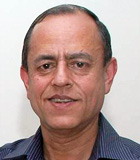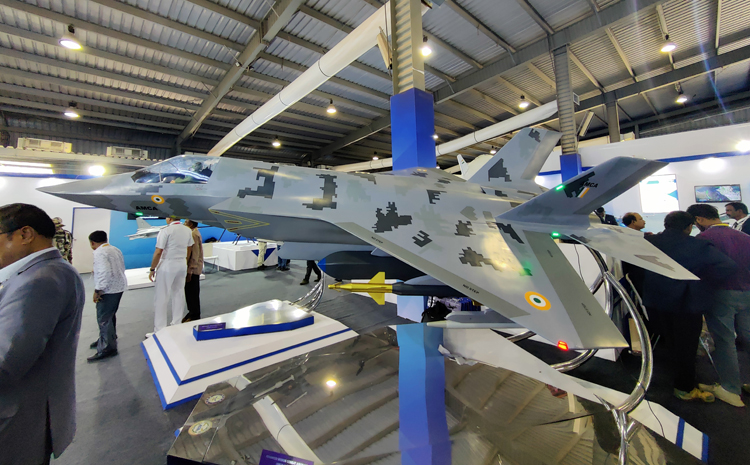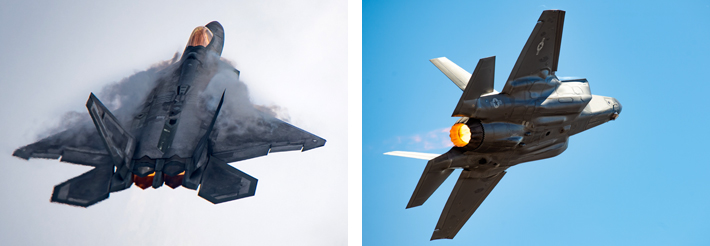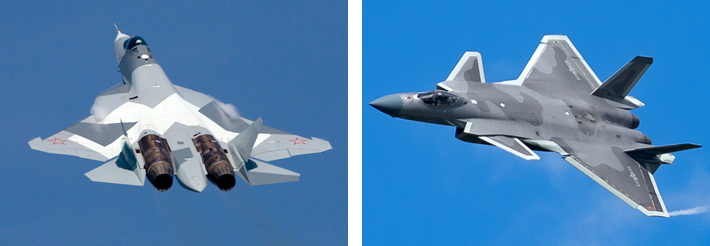INDIAN ARMED FORCES CHIEFS ON OUR RELENTLESS AND FOCUSED PUBLISHING EFFORTS

The insightful articles, inspiring narrations and analytical perspectives presented by the Editorial Team, establish an alluring connect with the reader. My compliments and best wishes to SP Guide Publications.

"Over the past 60 years, the growth of SP Guide Publications has mirrored the rising stature of Indian Navy. Its well-researched and informative magazines on Defence and Aerospace sector have served to shape an educated opinion of our military personnel, policy makers and the public alike. I wish SP's Publication team continued success, fair winds and following seas in all future endeavour!"

Since, its inception in 1964, SP Guide Publications has consistently demonstrated commitment to high-quality journalism in the aerospace and defence sectors, earning a well-deserved reputation as Asia's largest media house in this domain. I wish SP Guide Publications continued success in its pursuit of excellence.
- Operation Sindoor: Resolute yet Restrained
- India’s Operation Sindoor Sends a Clear Message to Terror and the World – ‘ZERO TOLERANCE’
- Japan and India set forth a defence cooperation consultancy framework, talks on tank and jet engines
- Terrorist Attack in Pahalgam in Kashmir: Unfolding a long surgical war against PAK
- Lt General Pratik Sharma takes over Command of Indian Army's Northern Command
Stealth Vehicles
Indian Institute of Technology (IIT) Mandi is working on developing materials that can be used for developing ‘stealth’ vehicles. The materials being developed can reportedly absorb more than 96 per cent of radar waves in a wide range of frequencies, coming simultaneously from multiple directions.
 |
The Author is Former Director General of Information Systems and A Special Forces Veteran, Indian Army |

Stealth technology, also termed low observable technology (LO technology) has become vital for militaries around the world. It includes passive and active electronic countermeasures covering a range of methods used to make personnel, aircraft, ships, submarines, missiles, satellites and surface vehicles less visible to radar, infrared (IR), sonar and other detection methods. It corresponds to military camouflage for these parts of the electromagnetic spectrum; multi-spectral camouflage.
Stealth technology or LO is not one technology. It is a set of technologies, used in combinations, that can greatly reduce the distances at which a person, vehicle or object can be detected; more so radar cross-section reductions, but also acoustics, thermal and other aspects. The simplest technology is visual camouflage; the use of paint or other materials to colour and break up the lines of a vehicle or person. Most stealth aircraft use matte paint and dark colors, and operate only at night. Stealth implies any military technology intended to make vehicles or missiles nearly invisible to enemy radar or other electronic detection.
Stealth technology is not one technology. It is a set of technologies, used in combinations, that can greatly reduce the distances at which a person, vehicle or object can be detected
Aircrafts can be made less visible to the opponent's detection system by the use of composites. Radar-absorbing material (RAM) is a specialist class of polymer-based material applied to the surface of stealth military aircraft, such as the F-22 Raptor and F-35 Lightning II, to reduce the radar cross-section and thereby make them harder to detect by radar. Other fighter aircraft having stealth technology are the F-117 Nighthawk, J-20 and the Su-57. India has also been developing some stealth-related technologies but the depth of research and design expertise required to build a successful stealth fighter is still in progress.

In pursuit of the Advanced Medium Combat Aircraft (AMCA) fifth-generation stealth, multirole combat aircraft program for the Indian Air Force (IAF) and the Indian Navy (IN), the DRDO in conjunction with Hindustan Aeronautics Limited (HAL) is apparently working RAM materials using carbon nano-tubes technology and polymer composite materials to absorb radar waves and enable self healing though progress of the stage of this development is not known.
Now there is news that Indian Institute of Technology (IIT) Mandi in Himachal Pradesh is working on developing materials that can be used for developing ‘stealth’ vehicles. The materials being developed can reportedly absorb more than 96 per cent of radar waves in a wide range of frequencies, which has multiple usages in military operations. Moreover, the materials under development can absorb over 96 per cent radar waves coming simultaneously from multiple directions. The material reportedly can be applied to military vehicles including to their windows or glass panes, aircraft, ships and other military equipment to reduce their vulnerability to enemy detection and targeting.
Stealth implies any military technology intended to make vehicles or missiles nearly invisible to enemy radar or other electronic detection
Above is a welcome development. Given the widespread of use of balloons in near space for spying, monitoring and other military tasks, these materials would be useful in developing indigenous space balloons for surveillance and monitoring enemy activities along our land borders, coastline, island territories and the Indian Ocean region (IOR).

Surveillance radars can usually track ground vehicles from a distance of 10-15 km. Attack helicopters and drones also rely upon their radars and sensors to track ground vehicles. Moreover, modern satellites are using Specific Absorption Rate (SAR) radars. It will be excellent for ground troops if their vehicles can dim or deceive the enemy using the materials developed by IIT Mandi. It is not that the vehicles will be rendered invisible but reducing the radar signatures using these materials would help troop deployments to a great extended with reduced chances of detection. Significantly, Russia has deployed highly advanced camouflage nets, made with ‘RAM CNT Techs Private Limited’ composites to hide Thermal IR Heat, as also visual stealth hiding for T-90MS tanks deployed for special operations in Ukraine.
India has also been developing some stealth-related technologies but the depth of research and design expertise required to build a successful stealth fighter is still in progress
For India to join the ranks of militarily strong nations, only having a stealth fighter aircraft, stealth ship and stealth submarine would not suffice. The requirement is also to develop the following weapon systems that are all based on ‘stealth’: cruise missiles, ballistic missiles, hypersonic missiles, subsonic missiles, beyond visual range (BVR) air-to-air missiles; surface to air missiles (SAM), precision guided bombs (PGMs), laser guided bombs, glide bombs and torpedoes.
We have a long way to go and speed is of essence considering the mounting threats and the geostrategic environment with the US for a war with China, in addition to America’s war against Russia using Ukraine as proxy. India needs to go full throttle not only indigenously but also using every avenue that is ‘sincerely’ aligned with India national interests.





